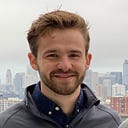Four Years of Medical School: Quantified
This post is part of Time Habits of a Medical Student, hit the hyperlink to see the other posts in the series
That’s a wrap! 9093 hours of work and four years later, I have officially wrapped up my requirements for medical school. I am happy to share that I am starting residency training in Otolaryngology — Head and Neck Surgery this July.
My goal for the summer leading up to when I started medical school in 2020 was to become more proficient with computer programming and data analysis. I was accustomed to tracking my billable hours for a previous job and decided to track and visualize how I use my time as a medical student. More background for the project is here.
See previous posts for a breakdown of each year: MS1, MS2, MS3, MS4
See my dashboard at this link to interact with the data
Throughout my journey in medical school and this project I have posted where my time went as I was studying to become a physician. However, in my previous posts, I never got granular regarding the outcomes of all of that work. Here is a breakdown of my last four years.

Preclinical years
The first two years of medical school are primarily classwork while beginning to understand the basics of taking a patient history and conducting a physical exam. I spent 3,916 hours working in my first two years of medical school in 16 courses, 49 quizzes, 21 tests, and one standardized exam (Step 1). See my previous posts for how to study in your first and second years including for Step 1 in the Pass/Fail Era.

Clinical years
Year three of medical school marks the transition to core and elective clinical rotations. I completed ten core rotations in Internal Medicine, Pediatrics, OBGYN, General Surgery, Family Medicine, Psychiatry, Neurology, Emergency Medicine, and Intensive Care. I also completed eight elective rotations in Diagnostic Radiology, Otolaryngology x 5, Orthopedic Surgery, and Anesthesia. Five of my elective rotations were as an acting intern (an advanced elective where the expectations are higher) for Otolaryngology x 4 and Orthopedic Surgery. Three of my 4-week Otolaryngology rotations were out of state to “audition” for other programs before the residency application cycle. When I wasn’t on a formal rotation, I worked as a teaching assistant for the Anatomy course for credit (eight total weeks). During my third year, I took 4 scored “shelf” exams for rotations along with 8 practice exams pertinent to each rotation. At the end of my third year, I took Step 2. I started the interview process during the fall of my fourth year. Throughout the two-month period, I completed 15 interviews in 9 different states.

Standardized Exams
I was part of the first cohort of medical students who took Step 1 Pass/Fail instead of a scored exam. Knowing it would lay a framework of knowledge for when I took Step 2 (which is scored), I still studied for Step 1 darn hard. In preparation, I answered 3796 practice questions and took four practice exams. Step 2 was the make-or-break exam for my residency application. In addition to preparing through the shelf exams throughout the year, I answered 4077 practice questions and took seven practice exams.
Anki
Anki is a spaced-repetition flashcard app widely used among medical students that was integral to my study routine throughout my time in medical school. Over the course of medical school, I used it for 1,168 hours. I also created an Otolaryngology flashcard deck for medical students and residents which required creating 1,597 cards and editing over 1,500. At the time of this writing, it has over 2,000 downloads and I hope that it remains a valuable resource for others pursuing the best specialty out there.

Research
Research was an everpresent endeavor as a medical student and will continue to be as an Otolaryngology resident. It took me a bit of time to determine which specialty would be the best fit for me so I dipped my toes into several departments including Urology, General Surgery, Orthopedic Surgery, and Otolaryngology; disciplines such as machine learning/artificial intelligence, medical devices (sacral nerve neuromodulation for urinary incontinence), patient education, and patient outcomes; and study designs including narrative reviews, systematic reviews, clinical trials, retrospective chart review, international software challenges, and database studies. My 12 projects and 1,065 hours of research resulted in six papers, one conference abstract, seven poster presentations, and one podium presentation. I also served as a peer-reviewer for two academic journals.

Life
Even through the rigors of medical school, I found time to relax, travel, and spend time with the people closest to me. Medical school was full of life milestones for me and my greatest accomplishment was marrying my supportive, beautiful wife. I went on a honeymoon to Arizona, made countless trips to see my brother in Chicago and in-laws in Wisconsin, made a trek to Acadia National Park and Boston, attended too many weddings to count, averaged working out 4 times per week, and read 27 non-medicine books. This has been a wild ride and I couldn’t have done it without the support of my friends and family. A trip to Italy with my wife is the last hurrah before I start my formal training in the specialty I think is medicine’s best-kept secret.

